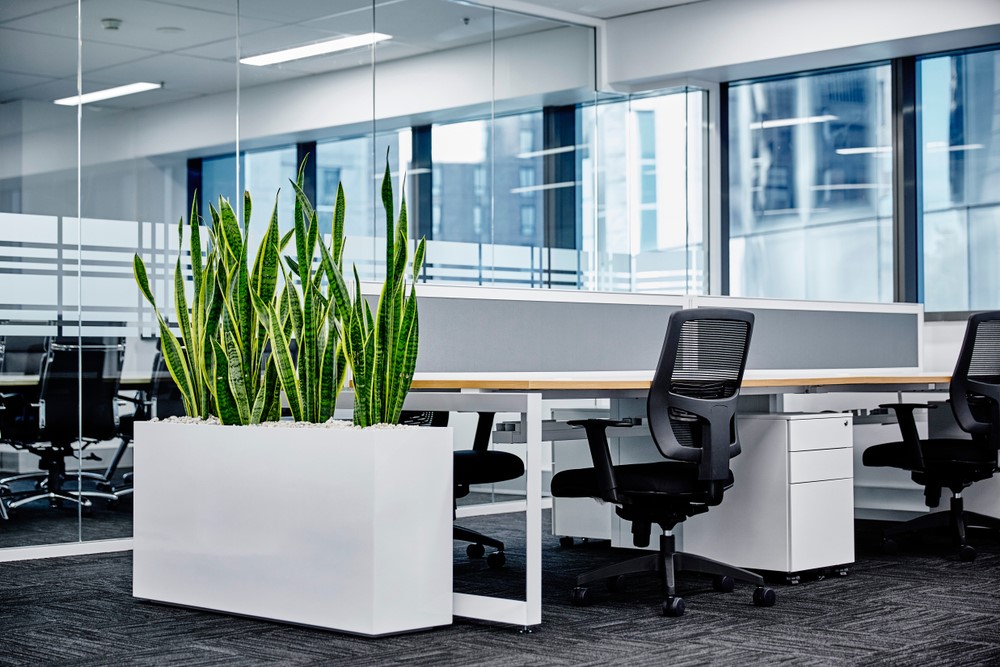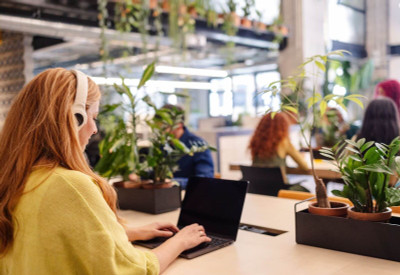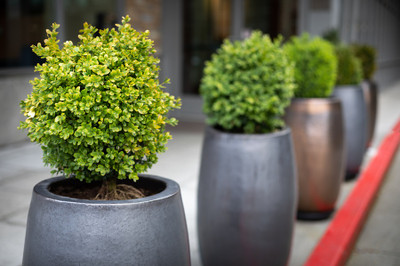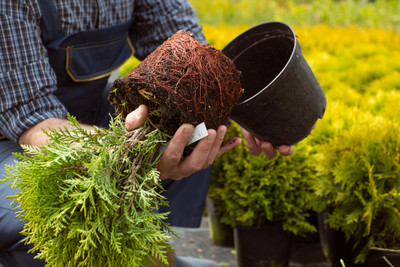The Ultimate Guide to Office Plants and Planters
Posted by Jason Wyrwicz on Nov 25th 2025

Whether you are launching a brand new startup, refreshing a long standing corporate office, or designing a creative studio, plants are one of the easiest upgrades you can make. They soften hard surfaces, improve how a space feels to work in, and can even support focus and creativity by reconnecting people with nature.
This guide pulls together ideas from several of our most popular articles into one place. You will find plant suggestions for desks, low light corners, busy teams who forget to water, and color hungry creative spaces, along with tips on choosing the right planters and keeping your plants happy.
Why Bring Plants Into the Office?
Humans are wired to respond positively to nature. The biophilia idea suggests that we feel calmer and more engaged when we can see natural forms around us, even inside a glass and steel building. Studies have linked indoor greenery with improved air quality, lower stress, and higher productivity, especially in workplaces where people spend long hours at a desk.
- Visual relief. Green foliage gives the eyes a break from screens and neutral walls.
- Perception of cleaner air. Many common houseplants can help remove certain airborne pollutants and add a little humidity to dry, conditioned offices.
- Mood and creativity. Colorful blooms and scented foliage can lift morale and spark ideas, which matters in both creative studios and high pressure startup environments.
- First impressions. A lobby or meeting room dotted with healthy plants and quality planters feels intentional and welcoming to clients and new hires.
How to Choose Plants for Your Workspace
Before you fall in love with a plant on social media, consider what your office can realistically offer it.
- Light levels. Look at where the sun actually reaches. South facing windows give bright light. Areas several feet back from windows tend to be medium to low light. Interior cubicles and corridors are usually low light only.
- Care and schedule. A plant in the middle of a busy open office may only get attention once a week. Choose tougher species for communal areas and reserve fussier plants for someone who enjoys tending them.
- Plant size and growth. A tiny desk succulent is perfect for a cramped workstation. A bold floor plant or planter grouping is better suited to lobbies, breakout areas, and corners that need anchoring.
- People and pets. If your workplace welcomes pets or small children, double check that your chosen plants are not toxic if chewed, and place any potentially irritating species out of reach.
- Brand and atmosphere. Sleek structural plants can echo a cutting edge tech brand. Soft, leafy groupings can support a warm hospitality vibe. Use plants as part of your design language rather than as an afterthought.
Desk Friendly Plants That Thrive With Minimal Fuss
These compact species are ideal for individual workstations, phone booths, and small meeting rooms.
Cacti and Compact Succulents
Desert natives such as small cacti and rosette forming succulents hold water in their tissues, so they cope well with the occasional missed watering. Give them a bright spot near a window and let the soil dry out between drinks. They are great for tight budgets and tiny desks, and they come in an enormous variety of shapes and colors.
Air Plants
Air plants (Tillandsia) grow without soil and can be displayed in glass terrariums, on shelves, or even mounted on small pieces of wood. A weekly soak or mist is often enough, as long as they can dry out again afterward. Their sculptural forms add a modern touch to reception counters and collaborative tables.
African Violet
African violets stay naturally small, bloom generously in shades of purple, pink, or white, and tolerate fluorescent lighting surprisingly well. They make a good choice for compact offices where window space is limited but a little color on a desk or credenza would be welcome.
Lemon Balm
Technically an herb, lemon balm works beautifully as a desk plant. Its fresh citrus scent is subtle yet uplifting and can help a workspace feel fresher during long days. It prefers regular watering and moderate light, so keep it near a window and water when the surface of the soil starts to dry.
Small Ferns
Varieties such as Boston fern or bird's nest fern bring soft, arching fronds that contrast nicely with angular office furniture. They enjoy consistently moist soil and higher humidity, which makes them ideal for offices that already feel slightly humid or for groupings near water coolers and kitchenettes.
Low Light and Low Effort Heroes

Many offices have deep floor plates, shaded windows, or interior corridors where direct sun rarely reaches. The plants below tolerate low light and a bit of neglect, which makes them perfect for busy teams and shared spaces.
Snake Plant (Sansevieria)
Upright, sword shaped leaves give snake plants a striking architectural look that suits modern interiors. They tolerate low light, irregular watering, and dry office air surprisingly well. Let the soil dry almost completely before watering again and choose a heavy planter so tall varieties do not tip.
ZZ Plant
ZZ plants have glossy, deep green leaflets on thick stems that store water. They are highly tolerant of low light and infrequent watering, which makes them ideal for offices that are closed over weekends or long holidays. Use them in matching planters to frame doorways or mark the ends of benching runs.
Spider Plant
Spider plants form fountains of slim, arching leaves and send out baby plantlets that can be rooted for new pots. They cope well with medium to low light and appreciate evenly moist soil. Hang them in baskets or place them on shelves where their trailing offsets can spill over the edge.
Pothos
Pothos is a classic trailing vine with heart shaped leaves in shades of green, gold, or white variegation. It remains attractive even in quite low light and only needs water when the top of the soil is dry. Train it along shelves, wrap it around support poles, or let it cascade from tall planters.
Dracaena
Dracaenas bring a tropical feel with their tufts of narrow leaves emerging from cane like stems. They handle normal office temperatures, medium light, and modest watering. Group several canes in a single tall planter to create a slim green screen between work zones.
Peace Lily
Peace lilies are famous for their broad dark leaves and elegant white spathes. They prefer bright, indirect light but will tolerate lower levels, and they visibly droop when thirsty, which is a handy reminder to water. Their clean lines and sculptural flowers suit reception areas and quiet meeting rooms.
Plants That Boost Creativity and Mood
In studios, marketing departments, and brainstorming rooms, plants can act as mood setters as much as decorative pieces. Colorful flowers and fragrant foliage help signal that these zones are meant for big ideas and collaboration.
Poinsettia
Best known as a winter holiday favorite, poinsettias provide blocks of intense red, pink, or white color. Use them to mark seasonal events, brighten reception counters, or add drama to client lounges. They like bright light away from drafts and prefer the soil lightly moist.
Hydrangea
With large globe like blooms in blues, pinks, or whites, hydrangeas are perfect for balconies, terraces, and transition spaces that link indoor offices with the outdoors. They appreciate cool rooms, extra humidity, and regular watering, so they work best where someone enjoys a little plant care as a break from screen time.
Lavender
Lavender brings soft purple flower spikes and a well loved fragrance associated with calm and clarity. In containers by windows or in roof terraces, it can help outdoor break areas feel like a mini retreat. Indoors, give it the brightest spot available and avoid overwatering.
Rosemary
Another aromatic herb, rosemary has fine needle like leaves and a clean scent that pairs well with contemporary interiors. A pot of rosemary near a coffee station or brainstorming corner delivers a subtle sensory cue that this is a space for fresh thinking.
Gerbera Daisy
Gerbera daisies offer bold, cheerful flowers in a compact plant. They stay relatively small, which suits shelves and side tables, and they are happy in bright but indirect light. Keep their soil lightly moist and remove spent blooms to encourage new ones.
Fiddle Leaf Fig
Large, violin shaped leaves and a strong vertical trunk have made the fiddle leaf fig a modern design icon. It shines as a statement plant in lobbies, corners of open plan offices, or creative studios that want a dramatic focal point. Provide bright filtered light and consistent watering, and give it a generous planter so it can grow without feeling cramped.
Good Luck and Statement Plants For Startups
Young companies often want greenery that feels symbolic as well as stylish. The plants below are associated with abundance, focus, or perseverance, which makes them popular choices for new ventures.
Lucky Bamboo
Often grown in water with decorative stones, lucky bamboo is associated in some traditions with good fortune and prosperity. It tolerates low light and simple care, which makes it perfect for desks, reception counters, and narrow ledges. Arrange several stems in a sleek cylinder planter for a modern look.
Chinese Money Plant
Round, coin like leaves give the Chinese money plant its reputation as a symbol of financial luck. It stays a manageable size and produces offsets that can be potted up as gifts for clients or new hires. Place it in bright, indirect light and rotate occasionally so it grows evenly.
Palm Lily (Yucca)
Yucca, sometimes sold as palm lily, has spiky rosettes of leaves on woody stems and brings a desert inspired look to open offices. It prefers bright light and well draining soil and is a great choice for tall planters that define pathways or separate collaborative zones from focused work areas.
Bonsai Trees
Bonsai require more attention than most plants in this guide, but they are also conversation pieces that show care and patience. Place one in a quiet executive office or meeting room where someone is happy to prune, water, and enjoy it regularly.
Designing With Planters

Plants are only half the story. The containers you choose influence how polished or chaotic your office looks, how easy it is to maintain, and how well plants fit your brand.
Quality Over Quantity
A few generous planters filled with healthy plants usually look better than dozens of tiny pots scattered everywhere. Choose statement pieces for key sightlines such as entrances, circulation routes, and the ends of desk rows, then add smaller accents on workstations where appropriate.
Choosing Planter Styles and Colors
- Coordinate shapes and finishes. Repeating rectangular, square, or round forms in the same finish keeps the space organized and calm.
- Use mostly neutral colors such as white, black, charcoal, or soft metallics so the foliage remains the star. Reserve bright colors for brand accents or playful zones.
- Select durable materials such as fiberglass or metal that can handle commercial traffic and regular cleaning.
Matching Plants to Planters
- Allow room for roots and growth. Tall plants like yucca, dracaena, and fiddle leaf fig need deeper containers and good ballast.
- Make sure there is appropriate drainage or a hidden liner system so watering is easy and safe for floors.
- Group plants with similar light and water needs in the same planter to simplify maintenance.
Positioning Planters in the Office
- Use tall planters to create gentle partitions between teams or to edge circulation paths.
- Soften hard corners, pillars, and structural columns by wrapping them with planters or placing one on each side.
- Keep plants out of direct collision paths and away from busy door swings, yet still within sight from most desks.
- Hang lighter plants such as spider plant or pothos where floor space is limited but a little greenery overhead would lift the mood.
What Your Office Plant Wishes You Knew
One of our favorite ways to think about plant care is to imagine the plant telling you how its day at the office went. If it could send you a memo, it might say things like:
- Please use water, not coffee. Drinks from the break room are for humans. Plain, room temperature water is best for roots.
- Check my soil, not the calendar. If the top inch is dry, a drink is probably welcome. If it is still damp, wait a little longer.
- Give me a planter that fits. Being wedged in a cracked plastic pot feels like wearing tight shoes all day. A correctly sized, sturdy planter makes a big difference.
- Pick someone in charge. When everyone waters a plant, it can drown. When no one does, it wilts. Assign a simple rota or a single plant champion.
- Do not move me every week. Constantly shifting between bright windows and dark corners can stress plants. Once you find a good spot, try to keep it consistent.
A Greener Office Starts Here
When you match the right plant to the right place and pair it with a quality planter, you gain far more than decoration. You create workspaces that feel healthier, more human, and more inspiring for everyone who spends time there, from founders and employees to visitors and clients.
Explore indoor and office planters in a range of shapes, sizes, and finishes to find the perfect home for your greenery, and build a plant palette that suits your light levels, schedule, and brand personality. Your office plants will thank you, and your team will feel the difference every day.



